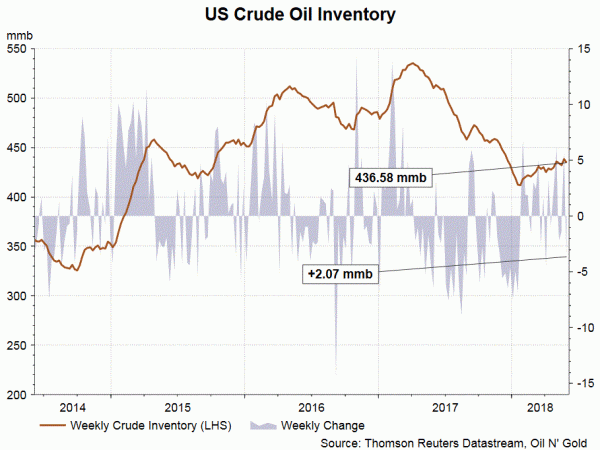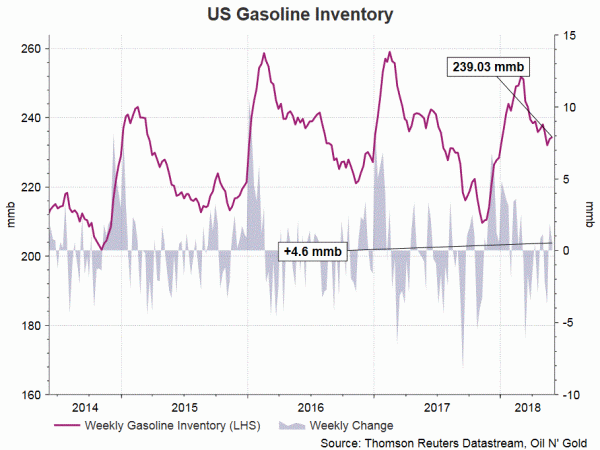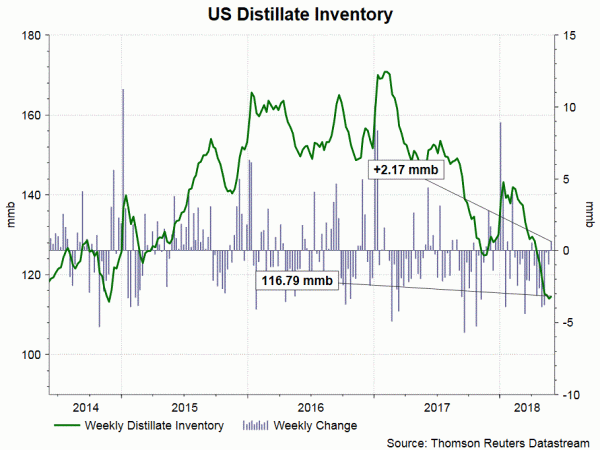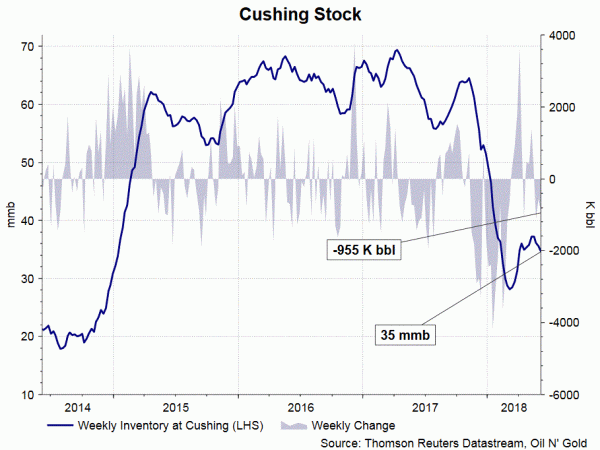Crude oil prices remain under pressure after reaching 3.5-year highs in mid-May. While both benchmarks are declining, the selloff of WTI crude oil has been more severe than its Brent counterpart, resulting in a widening of WTI- Brent spread to a level not seen since March 2015 last Friday. We believe prices have peaked. Concerns over OPEC/non-OPEC supply increase and news about Trump’s request on OPEC are just excuses for the bulls to take profit.
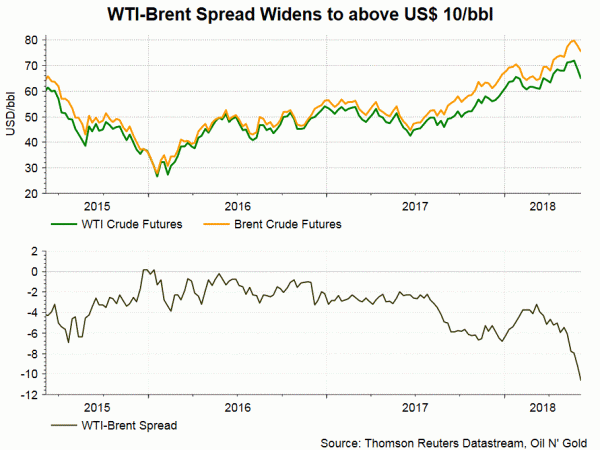
The recent crude oil uptrend, after bottoming out in January 2016, was anchored by OPEC/non -OPEC’s output cut deal reached in November 2016. Despite ebbs and flows as US shale investments soar as prices increase, the uptrend remains intact and has recently been reinforced by US sanctions on Venezuela and potential sanctions on Iran. Reuters’ estimate suggests that OPEC’s production in May plunged, by -0.7M bpd, to 32M bpd, the lowest since April 2017. However, we believe the price levels (WTI above US$65/ bbl, Brent above US$70/ bbl) are overextended with US output also in its uptrend and above 10M bpd. US producers are so tempted to increase output with oil prices at those levels.
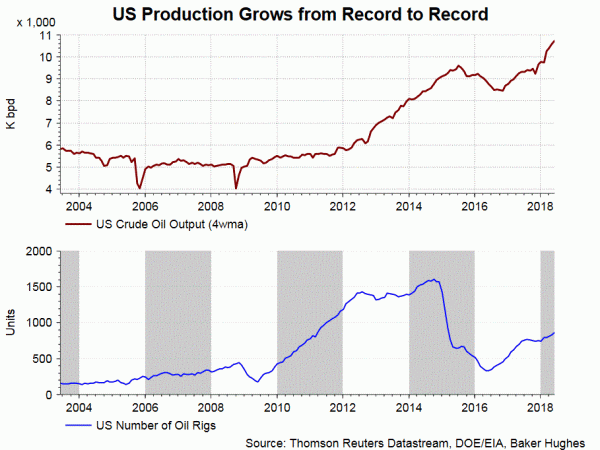
Concerns over Rising Supply
A Bloomberg report on June 5 revealed that the White House has secretly asked Saudi Arabia and some other OPEC producers to raise oil production by about 1M bpd. The request appears unexpected but is probably consistent with US President Trump’s erratic style. Back in April, Trump complained about OPEC’s policy and its impact on oil price. As he tweeted on April 20, “looks like OPEC is at it again. With record amounts of Oil all over the place, including the fully loaded ships at sea, Oil prices are artificially Very High! No good and will not be accepted!”. The rare request is indeed consistent with his populist stance as it come at a time when US retail gasoline prices surged to a 3-year high.
The news came in two weeks after the news that the OPEC/non- OPEC producers would discuss gradually removing the output ceiling later in June. Concerns over rising supply have swiftly overshadowed potential production loss from Venezuela and Iran. Russia’s oil minister Alexander Novak noted that the delegates would discuss “gradual output recovery” at the meeting. Meanwhile, Indian Oil Minister Dharmendra Pradhan quoted Saudi Arabia’s oil minister Khalid al-Falih as saying, during the International Energy Forum, that they are “revisiting” the “policy on oil output cuts”. We do not think the OPEC/ non-OPEC producers have a strong view on whether they should raise output or not. Their decision at the meeting on June 22 is largely contingent on oil price movement. As such, oil price actions matter a lot for the coming two weeks ahead of the OPEC/non-OPEC meeting.
EIA Weekly Inventory Report
The report from the US Energy Information Administration (EIA) shows that total crude oil and petroleum products stocks increased +1.58 mmb to 1209.76 mmb in the week ended June 1. Crude oil inventory gained +2.07 mmb (consensus: -1.82 mmb) to 436.58 mmb, as inventories increased in 3 out of 5 PADDs. Cushing stock slipped -0.96 mmb to 34.59 mmb. Utilization rate added +1.5% to 95.4%. Meanwhile, crude production increased +0.03M bpd to 10.8M bpd for the week.
Refined oil product inventories rose further. Gasoline inventory soared +4.6 mmb to 239.03 mmb as demand plunged -7.36% to 8.98M bpd. The market had anticipated a +0.59 mmb increase in stockpile. Production fell -7.43% to 9.66M bpd while imports fell -18.98% to 0.78M bpd during the week.
Distillate inventory increased for a second consecutive week, adding +2.17 mmb to 116.79 mmb. The market had anticipated a +0.78 mmb gain. This came in as a result of a -18.92% decline in demand to 3.5M bpd. Production gained +0.53% to 5.32M bpd while imports slumped -38.4% to 0.15M bpd during the week.
Released after market close on Tuesday, the industry- sponsored API estimated that crude oil inventory dropped -2.03 mmb during the week. For refined oil products, gasoline stockpile rose +3.76 mmb while distillate slipped -0.87 mmb.